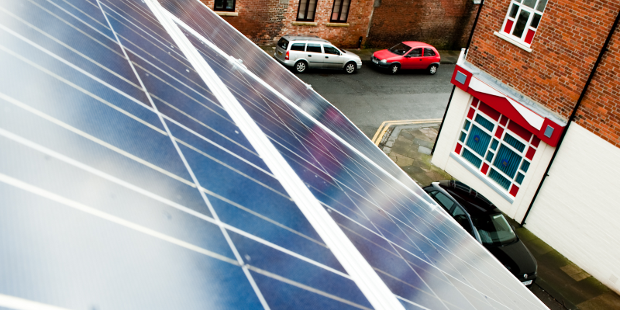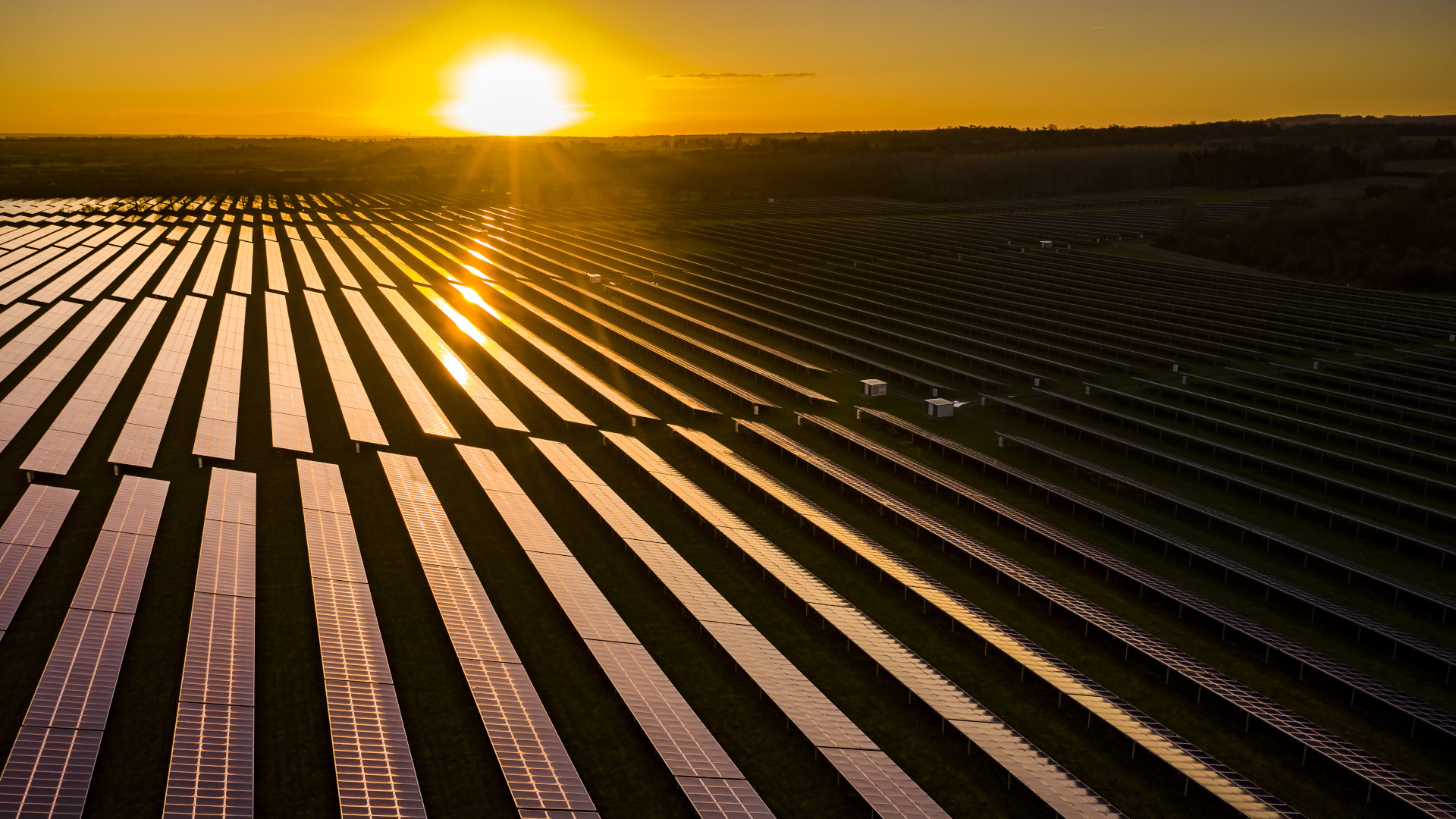
You may have recently heard about SolarCoin (§), although it has been around since 2014, the currency started to hit the energy headlines with ACWA Power becoming the first utility PV developer to begin to use SolarCoin[1]. At Decerna we heard about the currency a few days ago, discussed at a Solar Trade Association meeting. So, what is it? What is it for? Is it any use?
What is SolarCoin?
SolarCoin is essentially another cryptocurrency, the most famous cryptocurrency is the one which started it all, Bitcoin. Without going into too much detail, a cryptocurrency is a type of electronic currency which uses cryptography to secure its transactions. All transactions are recorded via a distributed ledger, the blockchain, a VERY big tamper proof database decentralised over many computers across the world. In order to receive SolarCoins, like any other cryptocurrency, you use a wallet, this is a secure personal database where you keep the address of your coins on the currency’s blockchain, and your personal keys to these coins. You can either download a program to keep a wallet on your computer, or use an online service. After this you can then register your photovoltaic system with solarcoin.org, who validate applications at the beginning of each month. You receive SolarCoins for every MWh of electricity generated. In terms of systems smaller than 100kW, this is a deemed production (365 days * 24 hrs * 15% * Your kWp Nameplate Capacity/1000). This works out to 1.314 * your installed kWp nameplate capacity = §1. Larger systems require a form of metering that can be validated. The initial SolarCoin grant is retroactive to the install date of your facility or Jan 1, 2010; whichever is more recent. Whilst there have been concerns over the use of energy by Bitcoin, SolarCoin uses a much lower amount of energy as it is based on a proof-of-stake system as opposed to a proof-of-work system. SolarCoin began in 2014[2], based on an idea first presented in 2011 for an Electricity-Backed Currency[3].
Is SolarCoin any use?
If you are already involved in renewable energy, instead of thinking of SolarCoin as a variant of the technology behind Bitcoin, it is better to think of it as a global equivalent of the Renewables Obligation Certificate (ROC). Within the UK, these were gifted to accredited renewable generators per MWh of green electricity produced, and then traded on a market. This is a useful analogy, because it gives us an idea of the necessary value for a Solar Coin to make a difference, and also shows a model that SolarCoin could replicate globally. Sadly, ROCs are now closed to new entrants.
In terms of ROCs, energy suppliers were mandated by government to produce a certain level of green electricity, if they failed, then they would be fined. However, if a generator did not have enough renewable generation, they could instead buy ROCs from green generators. Two important factors here, first, the value of a ROC varied between around £36.99 in 2010/2011 to £45.58 in 2017/2018[4]. The amount given to technologies varied from 2009 onwards, with ground mounted PV receiving 1.7 ROCs/MWh in 2013/2014, and 0.8 in 2016/2017 (a variation from £71.43/MWh of solar in 2013/2014 to £36.46/MWh of solar in 2017/2018). This value was enough to support the UK electricity market, and make wind farms and solar farms financially viable, and create enough interest from investors to support UK renewables. This is not about just making renewables competitive, as they often already are, it is about making them of interest enough so investors who otherwise would not care about renewables move into this market, and lead to more renewables being constructed. It is important to note that this doesn’t involve a large percentage increase in Solar Coin, currently it is trading at £0.5/§, so it would require a roughly 100 fold increase, which in the world of digital currencies is not impossible. Remember, from 2010 to today Bitcoin varied from $0.003/BTC to $13,800/BTC in 2018, with much volatility in between. However, for SolarCoin to be truly useful it needs to be far more stable than Bitcoin.
Whilst a value of between £36 and £71 per Solar Coin would give a financial case for solar farms, what about domestic renewables? We will demonstrate this with a model based on Newcastle upon Tyne, as this is the nearest city to our offices.
In 2016 there was a major crash in the solar PV industry, which it has never recovered from. This was caused by a reduction in the Feed in Tariff from £0.1233/kWh to £0.045/kWh[5], and resulted in approximately 18,000 redundancies across the industry[6]. The purpose of this was to reduce electricity bills, and was estimated to reduce the estimated electricity bill in the UK by £0.50 a year[7]. In addition, there is an export tariff, which is £0.0503/kWh against a deemed export of 50%. If we take the 2015 Feed in Tariff as the value which sustained a strong industry, then equating the Feed in Tariff and deemed Export Tariff gives us £148/§ as a target value.
For our model, we make the following assumptions:
- SolarCoin Vale = £148/§
- SolarCoin yearly value increase = 2%
- Electricity cost = £0.16/kWh
- Exported electricity = 50%
- Electricity prince increase per year = 5%
- Cost per kWp = £1,500
- Size of array = 4kWp
- Degradation of panels per year = 2% of year one
- Roof orientation = 0° (South)
- Roof pitch = 35°
- Irradiance = 916kWh/kWp (PVGIS data based on CMSAF)
- Feed in Tariff and Export Tariff = £0
This gives the following results:
- Payback = between five and six years
- Profit over 20 years = £22,593
This depends on many factors. If the use of the PV was 100% with no export, even without SolarCoin the payback would be just over 8 years, with SolarCoin at £148/§ the payback would be just over 4 years. Other options, such as domestic batteries, will obviously change the economic models.
Clearly, for the UK, a modest increase in SolarCoin could help the solar industry. The problem is, whilst previous policies have shown these values to work, SolarCoin requires stability, something which cryptocurrencies do not display, partially as they all follow Bitcoin values, which as the current fashionable cryptocurrency is currently in the state of being an investment option rather than a form of currency. However, the values which SolarCoin needs to achieve to make a significant difference in the global solar industry is not that much of a jump.
In terms of simplicity, cryptocurrency is far more complex to deal with than a simple Feed in Tariff submitted four times a year, and if as an industry this was to be taken seriously, possibly an organisation such as MCS could receive and distributed SolarCoin to domestic customers, this would have the added advantage that as all domestic PV should be installed by MCS accredited installers, then there would be a verifiable record of PV installations from MCS which SolarCoin could use to know who should receive coins.
In short, we feel SolarCoin is something worth watching, and if there is increased stability and a modest increase in value, then it could have a major impact on renewable developments in the UK, and logically have similar impacts globally, and thus help society move towards the levels of renewables necessary to make the reductions in greenhouse gases mandated by climate science.
At Decerna, we get very excited about new things which can help renewables, and we just registered our renewable energy training centre in Blyth to get SolarCoins. We train electricians how to install solar, design solar farms and sort out grid connections for solar/wind/battery farms.
Thanks to the STA for checking the solar facts within this blog.
References
[1] https://www.businessgreen.com/bg/news/3024460/acwa-power-joins-cryptocurrency-craze-with-adoption-of-solarcoin
[2] https://www.newscientist.com/article/dn25010-solarcoin-cryptocurrency-pays-you-to-go-green/
[3] https://papers.ssrn.com/sol3/papers.cfm?abstract_id=1802166
[4] https://www.ofgem.gov.uk/publications-and-updates/renewables-obligation-ro-buy-out-price-and-mutualisation-ceilings-2017-18
[5] https://www.ofgem.gov.uk/environmental-programmes/fit/fit-tariff-rates
[6] https://www.theguardian.com/environment/2016/jun/10/uk-solar-power-industry-job-losses-government-subsidy-cuts-energy-policy
[7] https://www.theguardian.com/environment/2015/jul/22/solar-power-subsidies-to-be-cut-under-plans-to-reduce-green-energy-costs





